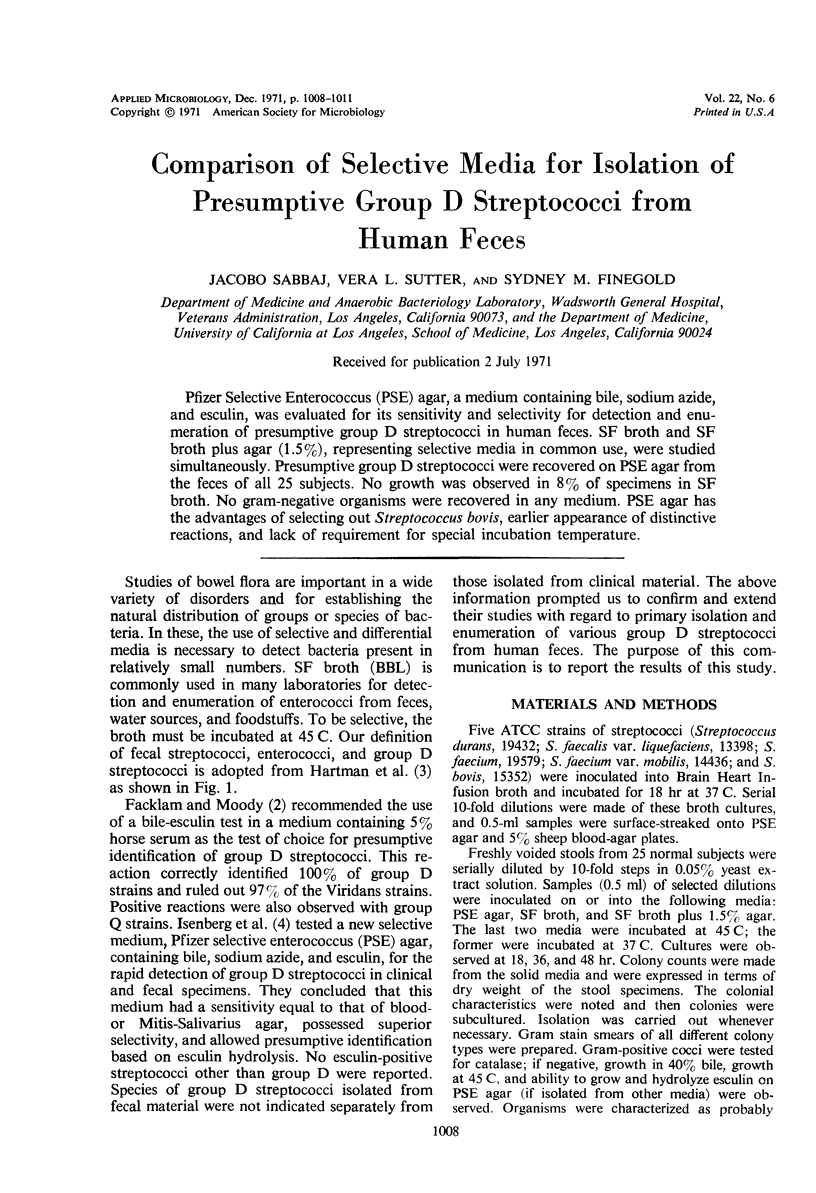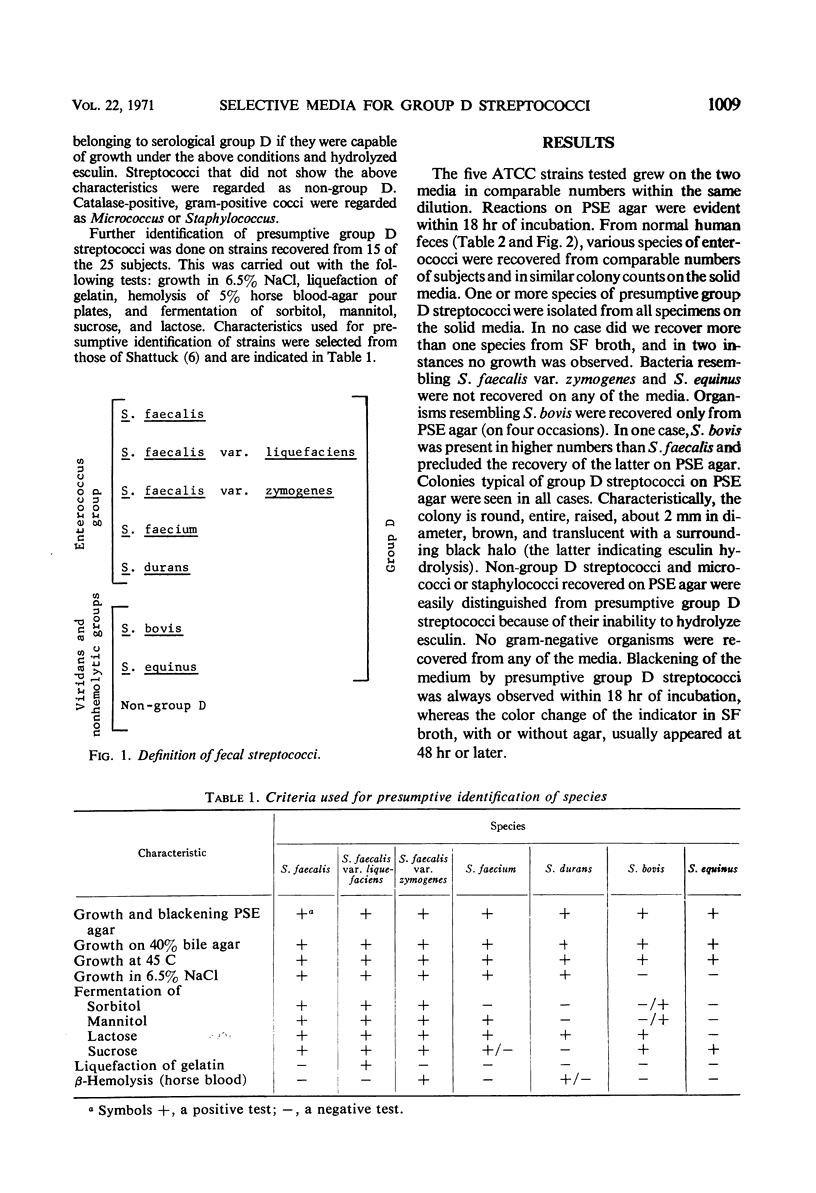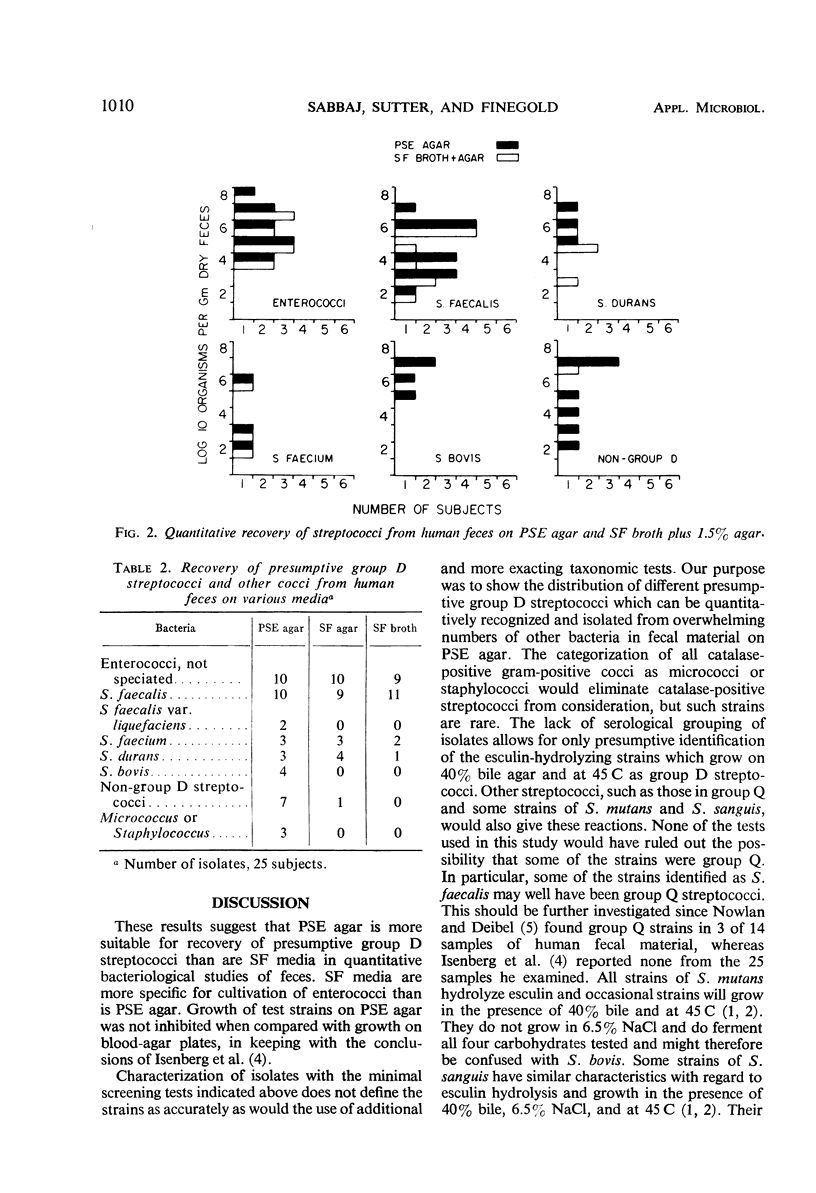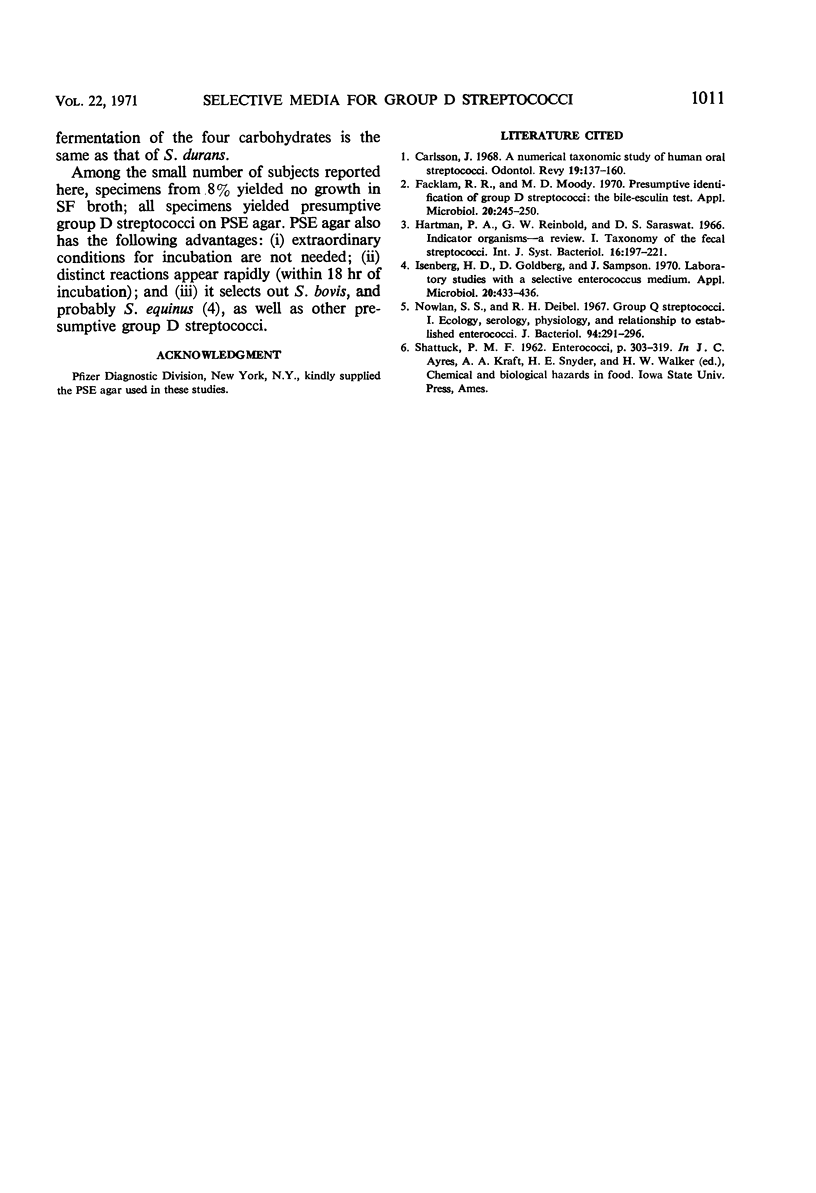Abstract
Pfizer Selective Enterococcus (PSE) agar, a medium containing bile, sodium azide, and esculin, was evaluated for its sensitivity and selectivity for detection and enumeration of presumptive group D streptococci in human feces. SF broth and SF broth plus agar (1.5%), representing selective media in common use, were studied simultaneously. Presumptive group D streptococci were recovered on PSE agar from the feces of all 25 subjects. No growth was observed in 8% of specimens in SF broth. No gram-negative organisms were recovered in any medium. PSE agar has the advantages of selecting out Streptococcus bovis, earlier appearance of distinctive reactions, and lack of requirement for special incubation temperature.
Full text
PDF



Selected References
These references are in PubMed. This may not be the complete list of references from this article.
- Carlsson J. A numerical taxonomic study of human oral streptococci. Odontol Revy. 1968;19(2):137–160. [PubMed] [Google Scholar]
- Facklam R. R., Moody M. D. Presumptive identification of group D streptococci: the bile-esculin test. Appl Microbiol. 1970 Aug;20(2):245–250. doi: 10.1128/am.20.2.245-250.1970. [DOI] [PMC free article] [PubMed] [Google Scholar]
- Isenberg H. D., Goldberg D., Sampson J. Laboratory studies with a selective Enterococcus medium. Appl Microbiol. 1970 Sep;20(3):433–436. doi: 10.1128/am.20.3.433-436.1970. [DOI] [PMC free article] [PubMed] [Google Scholar]
- Nowlan S. S., Deibel R. H. Group Q streptococci. I. Ecology, serology, physiology, and relationship to established enterococci. J Bacteriol. 1967 Aug;94(2):291–296. doi: 10.1128/jb.94.2.291-296.1967. [DOI] [PMC free article] [PubMed] [Google Scholar]


